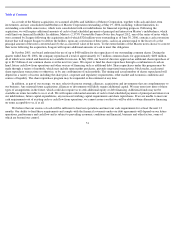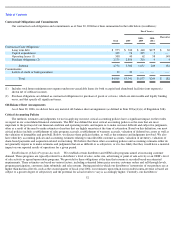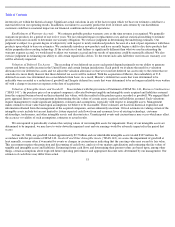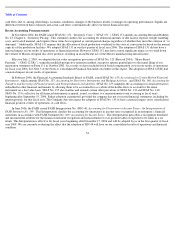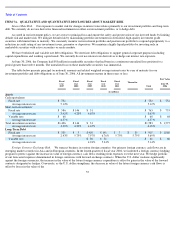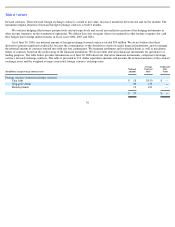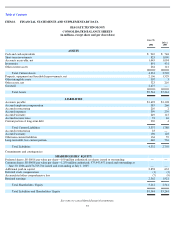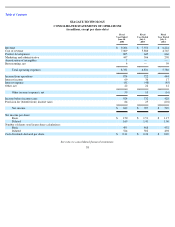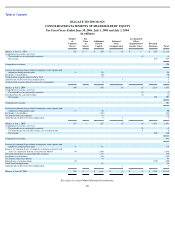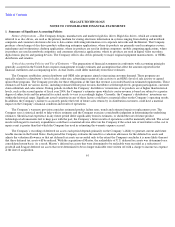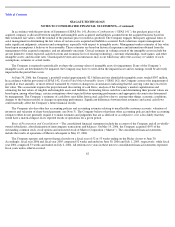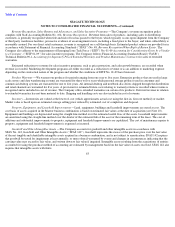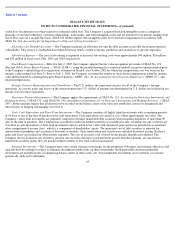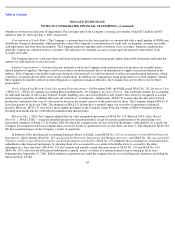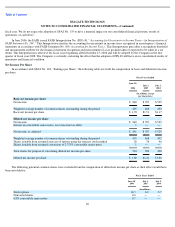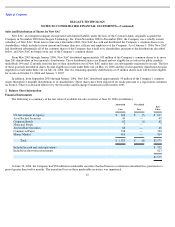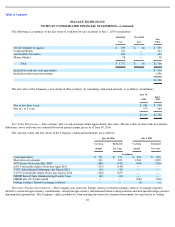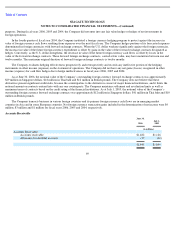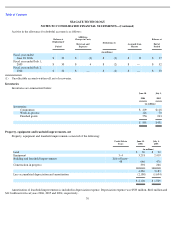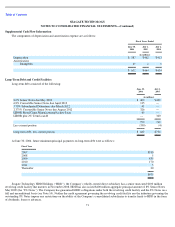Seagate 2005 Annual Report Download - page 63
Download and view the complete annual report
Please find page 63 of the 2005 Seagate annual report below. You can navigate through the pages in the report by either clicking on the pages listed below, or by using the keyword search tool below to find specific information within the annual report.
Table of Contents
SEAGATE TECHNOLOGY
NOTES TO CONSOLIDATED FINANCIAL STATEMENTS
1. Summary of Significant Accounting Policies
Nature of Operations —The Company designs, manufactures and markets rigid disc drives. Rigid disc drives, which are commonly
referred to as disc drives, are used as the primary medium for storing electronic information in systems ranging from desktop and notebook
computers and consumer electronics devices to data centers delivering information over corporate networks and the Internet. The Company
produces a broad range of disc drive products addressing enterprise applications, where its products are primarily used in enterprise servers,
mainframes and workstations; desktop applications, where its products are used in desktop computers; mobile computing applications, where
its products are used in notebook computers; and consumer electronics applications, where its products are used in digital video recorders,
digital music players and gaming devices. The Company sells its disc drives primarily to major original equipment manufacturers, or OEMs,
distributors and retailers.
Critical Accounting Policies and Use of Estimates —The preparation of financial statements in conformity with accounting principles
generally accepted in the United States requires management to make estimates and assumptions that affect the amounts reported in the
financial statements and accompanying notes. Actual results could differ materially from those estimates.
The Company establishes certain distributor and OEM sales programs aimed at increasing customer demand. These programs are
typically related to a distributor’s level of sales, order size, advertising or point of sale activity or an OEM’s level of sale activity or agreed
upon rebate programs. The Company provides for these obligations at the time that revenue is recorded based on estimated requirements. These
estimates are based on various factors, including estimated future price erosion, distributor sell-through levels, program participation, customer
claim submittals and sales returns. During periods in which the Company’ distributors’ inventories of its products are at higher than historical
levels, such as the second quarter of fiscal year 2004, the Company’s estimates upon which its contra-revenue is based are subject to a greater
degree of subjectivity and the potential for actual results to vary is accordingly higher. Currently, the Company’s distributors’ inventories are
within the historical range. Significant actual variations in any of these factors could have a material effect on the Company’s operating results.
In addition, the Company’s failure to accurately predict the level of future sales returns by its distribution customers could have a material
impact on the Company’s financial condition and results of operations.
The Company’s warranty provision considers estimated product failure rates, trends and estimated repair or replacement costs. The
Company uses a statistical model to help with its estimates and the Company exercises considerable judgment in determining the underlying
estimates. Should actual experience in any future period differ significantly from its estimates, or should the rate of future product
technological advancements fail to keep pace with the past, the Company’s future results of operations could be materially affected. The actual
results with regard to warranty expenditures could have a material adverse effect on the Company if the actual rate of unit failure or the cost to
repair a unit is greater than that which the Company has used in estimating the warranty expense accrual.
The Company’s recording of deferred tax assets each period depends primarily on the Company’s ability to generate current and future
taxable income in the United States. Each period the Company evaluates the need for a valuation allowance for the deferred tax assets and
adjusts the valuation allowance so that net deferred tax assets are recorded only to the extent the Company concludes it is more likely than not
that these deferred tax assets will be realized. With the acquisition of Maxtor, the realizability of U.S. deferred tax assets was determined on a
consolidated return basis. As a result, Maxtor’s deferred tax assets that were determined to be realizable were recorded as a reduction of
goodwill and Seagate deferred tax assets that were determined to be no longer realizable were written off with a charge to income tax expense
at the date of acquisition.
61


